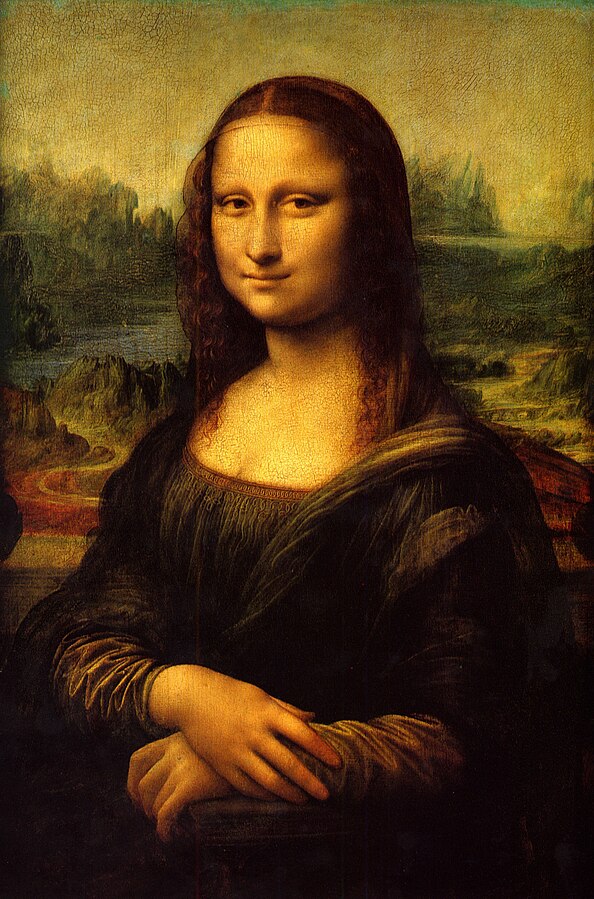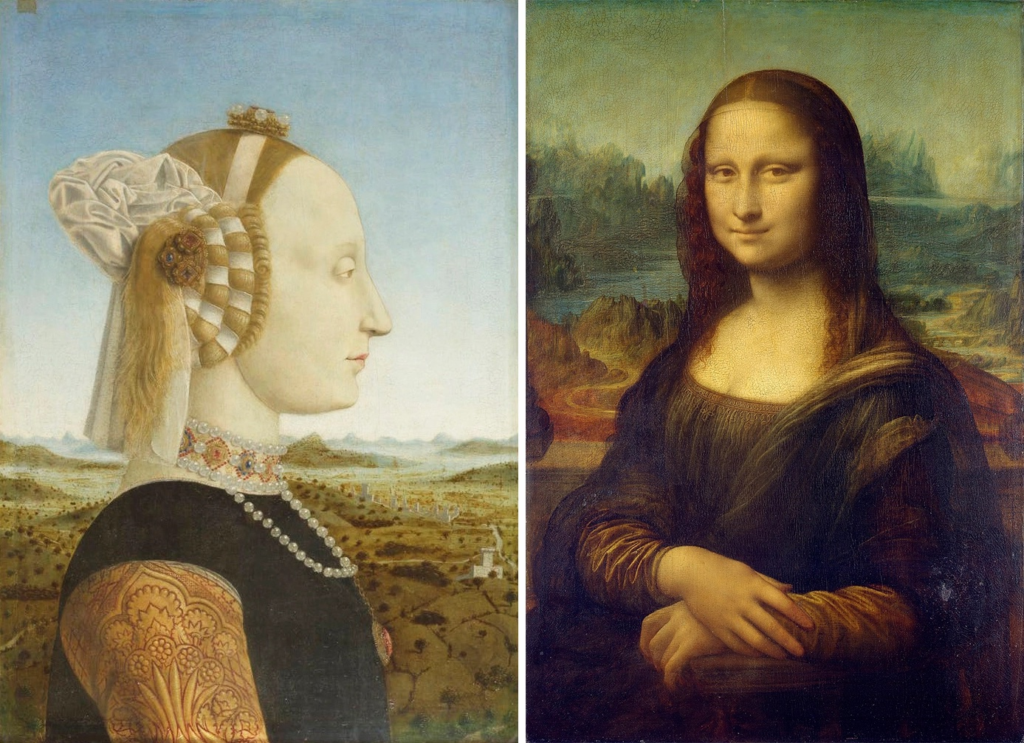The Secret World of Mona Lisa: Exploring Leonardo’s Symbolism
Delve into the mysteries of ‘Mona Lisa,’ exploring its enigmatic smile, symbolism, and the techniques behind this timeless masterpiece

Leonardo da Vinci’s Mona Lisa is one of the most famous and enigmatic paintings in the world. This article delves into the mysteries and symbolism surrounding this masterpiece, exploring the hidden meanings and artistic techniques that continue to captivate audiences. Understanding the Mona Lisa provides not just an appreciation of a remarkable work of art but also insights into the genius of Leonardo da Vinci and the cultural context of the Renaissance.
The Historical Context of the “Mona Lisa”
Creation and Timeline of the “Mona Lisa”
The Mona Lisa, also known as La Gioconda, was painted by Leonardo da Vinci during the Renaissance, a period of great cultural and artistic flourishing. It is believed to have been created between 1503 and 1506, with some scholars suggesting Leonardo continued to work on it for several years. The painting’s exact timeline is still a subject of debate, reflecting the meticulous care Leonardo invested in perfecting this work.
Leonardo da Vinci’s Background and Artistic Influence

Leonardo da Vinci, born in 1452, was a polymath whose interests spanned art, science, engineering, and anatomy. His diverse talents and insatiable curiosity profoundly influenced his artistic creations. The Mona Lisa exemplifies his mastery of painting techniques and his deep understanding of human anatomy and emotion.
Cultural and Historical Significance During the Renaissance
During the Renaissance, art became a crucial means of exploring humanism, individualism, and naturalism. The Mona Lisa embodies these ideals, capturing a lifelike representation of a woman with a mysterious aura. Its cultural and historical significance lies in its innovative techniques and its reflection of Renaissance ideals.
The Enigmatic Smile

Analysis of the Mona Lisa’s Smile and Its Impact
The Mona Lisa’s smile is perhaps the most analyzed and debated feature of the painting. Its ambiguity has captivated viewers for centuries, evoking various emotions and interpretations. The smile appears to change depending on the viewer’s perspective and mood, a testament to Leonardo’s genius in capturing the complexity of human expression.
Theories and Interpretations of the Smile’s Meaning
Numerous theories attempt to decode the meaning behind the Mona Lisa’s smile. Some suggest it reflects contentment, while others see it as a sign of melancholy or secret knowledge. Psychoanalytic interpretations propose that the smile embodies Leonardo’s subconscious, while art historians often highlight its role in creating an emotional connection with the viewer.
Psychological and Artistic Techniques Used to Create the Smile
Leonardo employed a range of psychological and artistic techniques to achieve the Mona Lisa’s smile. The use of subtle gradations of tone and color, particularly in the corners of the mouth and eyes, creates an illusion of depth and movement. This technique, combined with his profound understanding of human anatomy, results in a smile that seems to shift and change.
The Use of Sfumato Technique

Explanation of the Sfumato Technique Used by Leonardo
The Mona Lisa is renowned for Leonardo’s use of the sfumato technique, a method of blending colors and tones so smoothly that they fade into one another without noticeable transitions. This technique creates a soft, almost blurry effect, giving the painting a lifelike quality and enhancing its mysterious atmosphere.
How Sfumato Contributes to the Overall Mystery of the Painting
Sfumato plays a crucial role in the Mona Lisa’s enigmatic quality. By softening edges and creating subtle transitions, Leonardo envelops the subject in a veil of mystery. The lack of harsh lines and the seamless blending of features make the painting’s details, including the smile and eyes, appear more lifelike and elusive.
Examples of Sfumato in Other Works by Leonardo
Leonardo’s mastery of sfumato is evident in other works as well, such as The Virgin of the Rocks and St. John the Baptist. In these paintings, he uses the technique to create depth and realism, enhancing the naturalism and emotional impact of his subjects.
The Landscape and Background

Description and Analysis of the Background Landscape
The background of the Mona Lisa features a winding road, a distant bridge, and a serene landscape that transitions from rugged mountains to a placid river. This landscape not only adds depth to the painting but also contributes to its overall atmosphere of tranquility and mystery.
Symbolic Meanings of the Depicted Scenery
The background landscape in the Mona Lisa is often interpreted as symbolic. The winding road and river may represent the journey of life, while the distant mountains suggest unattainable heights or goals. The serene yet complex scenery reflects the complexity of the human soul and the inner life of the subject.
Comparison with Other Renaissance Landscapes

Comparing the Mona Lisa’s background with other Renaissance landscapes reveals Leonardo’s unique approach. While many Renaissance artists depicted idealized and harmonious landscapes, Leonardo’s background is more intricate and realistic, adding to the painting’s depth and mystery.
The Identity of the Mona Lisa
Historical Theories About the Identity of the Mona Lisa
The identity of the Mona Lisa has long been a subject of speculation. The most widely accepted theory is that she is Lisa Gherardini, a Florentine woman whose husband, Francesco del Giocondo, commissioned the portrait. However, other theories suggest she could be a composite of several women, a self-portrait of Leonardo, or even a symbolic figure.
Evidence Supporting the Lisa Gherardini Theory

Historical records and recent research support the theory that the Mona Lisa is Lisa Gherardini. Documents from Leonardo’s time mention a portrait of Lisa del Giocondo, and recent studies of the painting’s provenance align with this identification. Additionally, the name “La Gioconda” (the happy one) is a play on Lisa’s married name.
Discover more about Lisa Gherardini, the woman believed to be the Mona Lisa, in this article.
Alternative Theories and Modern Interpretations
Despite the strong evidence for Lisa Gherardini, alternative theories persist. Some suggest the Mona Lisa could be Isabella d’Este, a prominent noblewoman, or even a depiction of an idealized feminine figure. Modern interpretations continue to explore these possibilities, adding to the painting’s enduring intrigue.
Symbolism in the Painting
Analysis of Symbolic Elements in the Painting
The Mona Lisa is rich with symbolic elements. The faint smile, the distant gaze, and the serene landscape all contribute to the painting’s layered meanings. Leonardo’s meticulous attention to detail invites viewers to find deeper significance in every aspect of the work.
Interpretation of Objects, Colors, and Gestures
The objects, colors, and gestures in the Mona Lisa all carry symbolic weight. The positioning of the hands suggests calmness and control, while the use of earth tones and subtle shading reflects a connection to nature. The subject’s direct gaze engages viewers, creating a sense of intimacy and mystery.
Theories About Hidden Messages and Codes
Numerous theories propose that the Mona Lisa contains hidden messages and codes. Some suggest that Leonardo embedded secret symbols or references to scientific principles within the painting. These theories, while speculative, highlight the depth of Leonardo’s intellect and his penchant for embedding multiple layers of meaning in his work.
The Impact and Legacy of the Mona Lisa
The Painting’s Influence on Art and Culture
The Mona Lisa has had a profound impact on art and culture, influencing countless artists and becoming a symbol of artistic excellence. Its innovative techniques and enigmatic quality have set a benchmark for portrait painting, inspiring generations of artists to explore new dimensions of expression.
How the Mona Lisa Became an Icon of Popular Culture
Over the centuries, the Mona Lisa has transcended the art world to become an icon of popular culture. Its image is instantly recognizable, appearing in various forms of media, from advertisements to parodies. The painting’s fame has only grown with its presence in the Louvre Museum, attracting millions of visitors each year.
The Continuing Fascination and Scholarly Interest
The Mona Lisa continues to captivate scholars and art enthusiasts alike. Ongoing research and technological advancements have revealed new insights into Leonardo’s techniques and the painting’s history. This enduring fascination ensures that the Mona Lisa remains a subject of study and admiration.
Leonardo da Vinci’s Mona Lisa remains a masterpiece full of mysteries and symbolism. By examining the painting’s enigmatic smile, use of sfumato, background, and hidden meanings, we gain a deeper understanding of its enduring allure and artistic genius.
What are your thoughts on the mysteries and symbolism of the Mona Lisa? Share your interpretations in the comments below and join the discussion!
FAQs
What makes the Mona Lisa’s smile so enigmatic? The Mona Lisa’s smile is enigmatic because it appears to change depending on the viewer’s perspective and mood. Leonardo’s use of subtle gradations of tone and color creates an illusion of depth and movement, making the smile seem to shift.
Who is believed to be the subject of the Mona Lisa? The most widely accepted theory is that the subject is Lisa Gherardini, a Florentine woman. Her husband, Francesco del Giocondo, commissioned the portrait. However, other theories suggest she could be a composite of several women, a self-portrait of Leonardo, or even a symbolic figure.
What is the sfumato technique used in the Mona Lisa? Sfumato is a technique used to blend colors and tones smoothly without noticeable transitions. This creates a soft, almost blurry effect. Leonardo used sfumato to give the Mona Lisa a lifelike quality and enhance its mysterious atmosphere.
Why is the background of the Mona Lisa significant? The background of the Mona Lisa features a winding road, a distant bridge, and a serene landscape. This scenery adds depth and contributes to the painting’s overall atmosphere of tranquility and mystery. It also holds symbolic meanings, representing the journey of life and the complexity of the human soul.
What are some theories about hidden messages in the Mona Lisa? Numerous theories propose that the Mona Lisa contains hidden messages and codes. Some suggest Leonardo embedded secret symbols or references to scientific principles within the painting. These theories highlight the depth of Leonardo’s intellect and his tendency to embed multiple layers of meaning in his work.
How has the Mona Lisa influenced popular culture? The Mona Lisa has become an icon of popular culture, instantly recognizable and appearing in various forms of media. Its fame has grown with its presence in the Louvre Museum, attracting millions of visitors each year and influencing countless artists.
If you’re fascinated by the mysteries and symbolism of classic masterpieces like the “Mona Lisa,” you won’t want to miss our exploration of another revolutionary art movement. Dive into “Understanding Cubism: Picasso, Braque, and Their Revolutionary Techniques” to discover how these groundbreaking artists transformed the art world with their innovative approaches. Uncover the techniques and philosophies that made Cubism a pivotal movement in modern art history.




